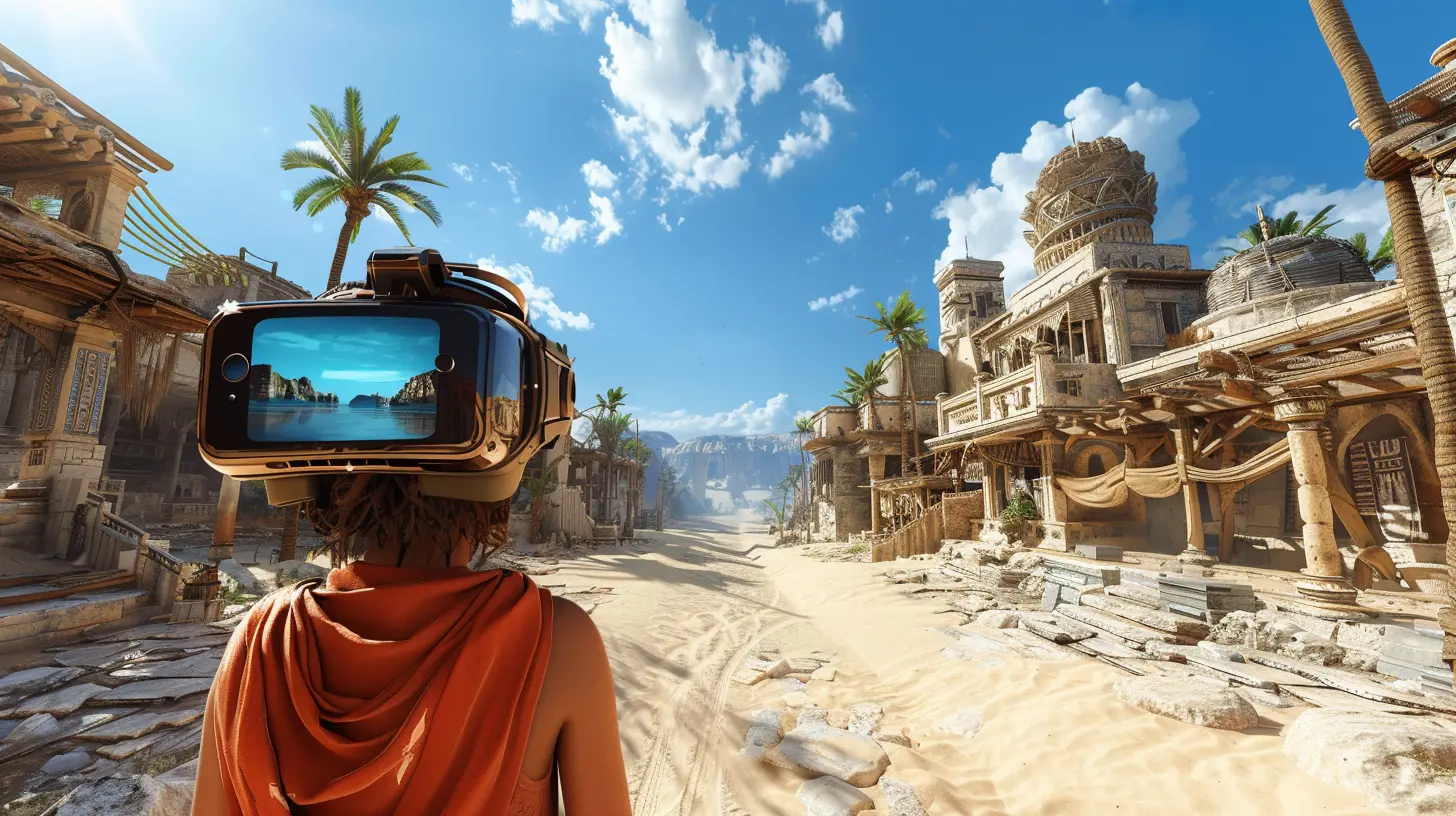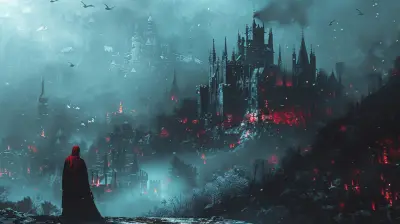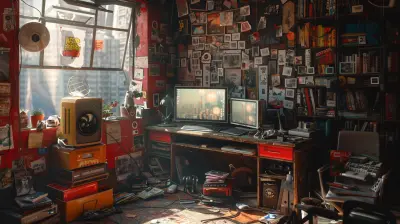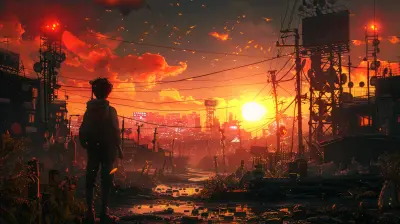The Role of World-Building in Immersive Interactive Experiences
23 October 2025
Let’s be honest—there’s nothing quite like getting completely lost in a game. You know the kind; your pizza gets cold, your pet looks at you sideways, and “just five more minutes” turns into an all-night binge. That’s the magic of a well-crafted game world. World-building isn’t just fluff or background noise—it’s the backbone of every immersive interactive experience.
In this article, we’re going to dive deep (like, Mariana Trench deep) into the role of world-building in immersive interactive games. Whether you’re a gamer, a game developer, or just someone fascinated by how stories pull us in, this one’s for you.
What Is World-Building, Anyway?
Before we go full throttle, let’s clear up what we mean by "world-building." In the simplest terms, it’s the art of creating the setting, culture, history, and rules of a fictional universe. Think of it as designing the entire stage before the play starts.But in games, world-building takes on even more weight because it's not just a backdrop—it's where players live, explore, and breathe. These aren’t just places you watch from afar like in books or movies; they’re digital worlds you actually inhabit. That’s a whole different ball game.
Why World-Building Matters So Much in Games
So, why is world-building super critical to immersive gameplay? Glad you asked.1. It Grounds Player Engagement
Great world-building gives players a reason to care. If the world feels alive—with its own logic, depth, and history—it hooks players in emotionally. It’s kind of like visiting a new city. If there’s personality, charm, and character, you want to stick around and uncover its secrets.Take “The Witcher 3,” for example. The political factions, folklore, monsters, and morally grey choices all feed into a world that feels real, even if it's fantastical.
2. It Enhances Exploration and Discovery
A well-built world rewards curiosity. Roaming through hidden alcoves, discovering ancient tombs, or finding an NPC with a tragic backstory makes the world feel layered.Games like “Elden Ring” or “Skyrim” thrive on this. You never know what the next cave holds—or if a random letter will start a questline bigger than the main story.
3. It Shapes Player Behavior
World-building isn’t just about visuals and lore. It influences how games are played.If a world is harsh and survival-based, players naturally stay cautious. If it’s colorful and silly, they’re more likely to mess around and have fun. So, the design of the world subtly nudges players in specific directions without force-feeding behavior.
World-Building Tools Developers Use To Craft Magic
Creating a living, breathing world isn’t easy. Developers use tons of tools—narrative, environmental storytelling, music, architecture, even weather! Let’s unpack a few.Lore and History
Deep lore isn't just for the hardcore lore nerds. A rich backstory gives context to the present. For instance, “Mass Effect’s” entire galactic setup makes more sense once you start digging into the history of the Reapers and ancient civilizations.Environmental Storytelling
Sometimes, the world speaks without saying a word.Think of a broken-down robot still holding flowers near a grave. No dialogue needed. Environmental storytelling uses visuals, placements, and design to tell stories silently.
Dialogue and NPCs
Characters aren't just quest-givers. Their conversations, opinions, and quirks help flesh out the world. When everyone in a city talks about the same strange weather or looming danger, it creates an atmosphere that players immediately feel part of.Sound and Music
Sound design is so underrated. Creepy whispers in a haunted mansion? Gentle flutes in a peaceful glade? That’s world-building too! Games like “Hollow Knight” and “Red Dead Redemption 2” masterfully use sound to reflect the soul of their worlds.
The Difference Between Good and Great World-Building
Not all world-building is equal. Some games create a setting that looks good on the surface but falls apart when you scratch it. Great world-building, on the other hand, feels consistent, detailed, and interconnected.Internal Logic
Even the most fantastical worlds need rules. Flying dragons? Cool. But why can they fly? What role do they play in society? If the world has logic and consistency, players will buy into it.Interactivity
Great worlds aren’t just shown to players—they’re experienced. Players should feel like their actions matter, even in subtle ways. Does killing a gang leader lead to a power vacuum? Do townsfolk react to your fame or infamy?Continuity
When everything in the world feels like it belongs there, players stay immersed. No jarring NPC lines, no weird terrain glitches, no side quests that contradict the main story. Seamlessness keeps players emotionally engaged.Genres That Lean Hard on World-Building
Every game has some form of world-building, but certain genres rely on it more heavily than others.RPGs (Role-Playing Games)
This one’s obvious. RPGs are the gold standard for in-depth world-building. From “Dragon Age” to “Final Fantasy,” these games create entire civilizations, political systems, and mythologies.Open-World Games
Exploration is king here. You need a world that’s more than just big—you need it to be meaningful. “Breath of the Wild” nails this with its physics-driven puzzles and hidden secrets packed into every corner.Survival and Crafting Games
In these games, the world is actively trying to kill you—or at least challenge you. “Subnautica” and “The Forest” create tension and immersion by making the environment part of the gameplay loop.Horror Games
Scary games thrive on atmosphere. The world is the monster, in a way. Games like “Amnesia” or “Resident Evil” make every hallway, shadow, and creaking door part of the narrative.Importance of Player Agency in World-Building
Now, here’s something that elevates world-building to a whole new level—player agency. In other words, giving players the power to affect the world.Imagine saving a village from raiders and returning hours later to see it rebuilt and thriving. That hits differently, right?
Games that incorporate dynamic world responses, like “Fable” or “Baldur’s Gate 3,” make players feel seen by the game world. And when a game world notices you, you become part of it, not just a visitor.
Multiplayer Games and Shared World-Building
World-building isn’t only a single-player thing. In fact, multiplayer games add a new twist—shared experiences.MMOs
Games like “World of Warcraft” or “Final Fantasy XIV” are massive sandboxes packed with player-driven stories, guilds, and in-game cultures. The devs build the bones, and the players flesh it out.Survival Co-op Games
In games like “Valheim” or “Minecraft,” the magic comes from building your own part of the world. You and your friends create towns, defenses, or weird sky islands—each server with its own story.The Challenges of World-Building
Let’s not pretend it’s all sunshine and rainbows. World-building takes time, creativity, and a whole lot of trial and error.Overloading the Player
Too much lore at once? That’s a recipe for confusion. Players don’t want a textbook; they want breadcrumbs that lead them toward the deeper stuff at their own pace.Balance Between Story and Gameplay
Sometimes, world-building can clash with gameplay. Maybe the world says “you’re in danger every second,” but the gameplay gives you god-mode. That disconnect snaps immersion like a twig.Keeping It Fresh
The hardest part? Keeping the world compelling over time. Dead worlds feel, well… dead. Updates, evolving storylines, and seasonal events can help keep things from getting stale.Why Players Keep Coming Back to Immersive Worlds
Ever wonder why people keep restarting “Skyrim” over a decade later? Or why die-hard fans still hang out on “GTA V” servers?It's because those worlds feel like home. Not just a map—but a place imprinted with their memories, choices, and experiences. Great world-building creates not just stories, but legacies.
Wrapping It Up: More Than Just Pretty Pixels
At its core, world-building is what transforms a game from a simple pastime into an unforgettable experience. It gives games heart, depth, and soul. Whether you’re casting spells in a fantasy land, surviving your next night in the wilderness, or just vibing in a futuristic sci-fi city, it’s the layers of the world around you that make the moment stick.So next time you boot up your favorite game, take a second to look around—and tip your hat to the invisible architects who made that world feel real.
all images in this post were generated using AI tools
Category:
Interactive StorytellingAuthor:

Stephanie Abbott
Discussion
rate this article
1 comments
Theodora Riley
World-building is essential for creating immersive experiences, as it enriches storytelling and enhances player engagement in interactive environments.
October 30, 2025 at 6:02 PM

Stephanie Abbott
Thank you! I completely agree—effective world-building not only deepens storytelling but also fosters a stronger connection between players and the interactive experience.


